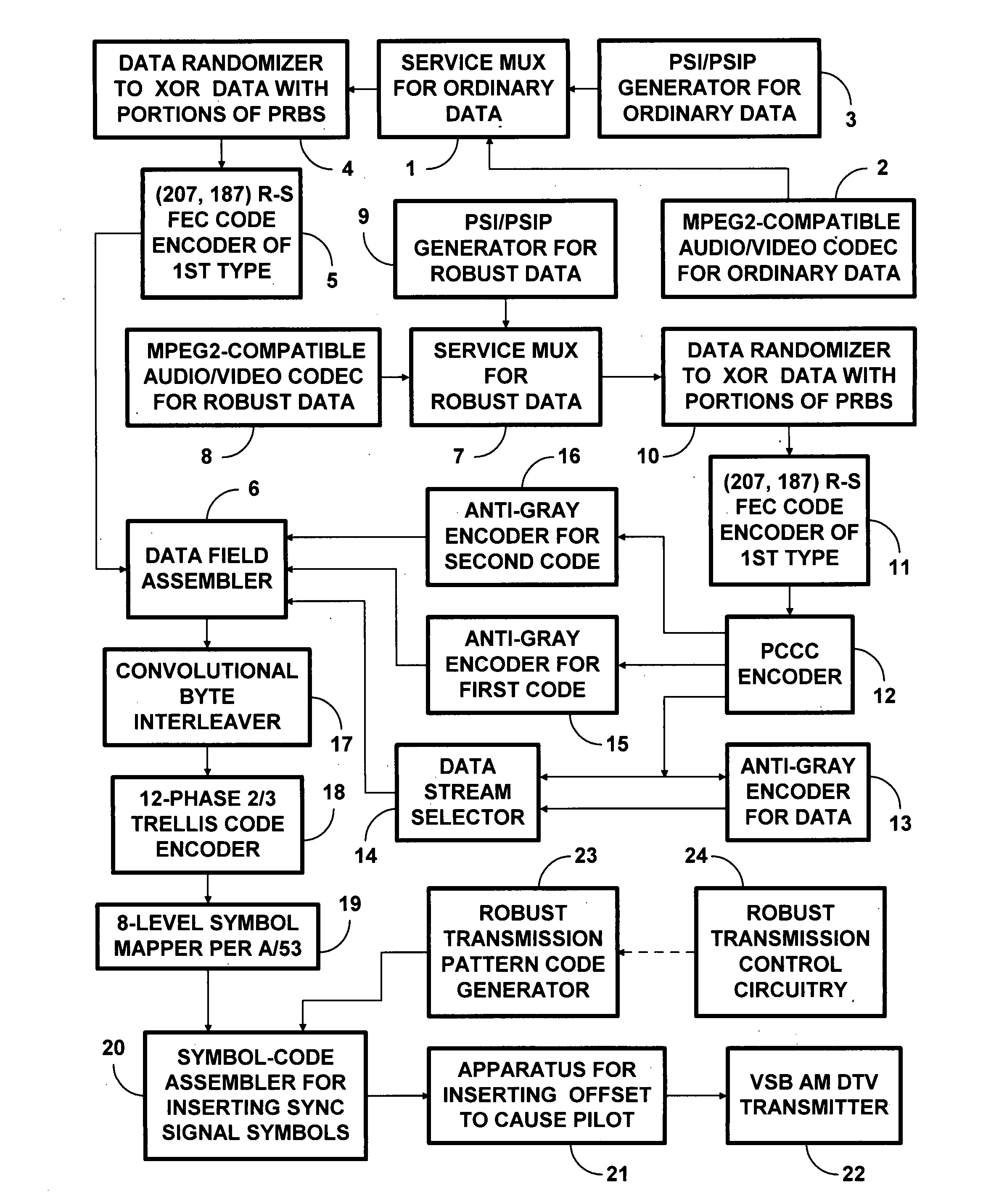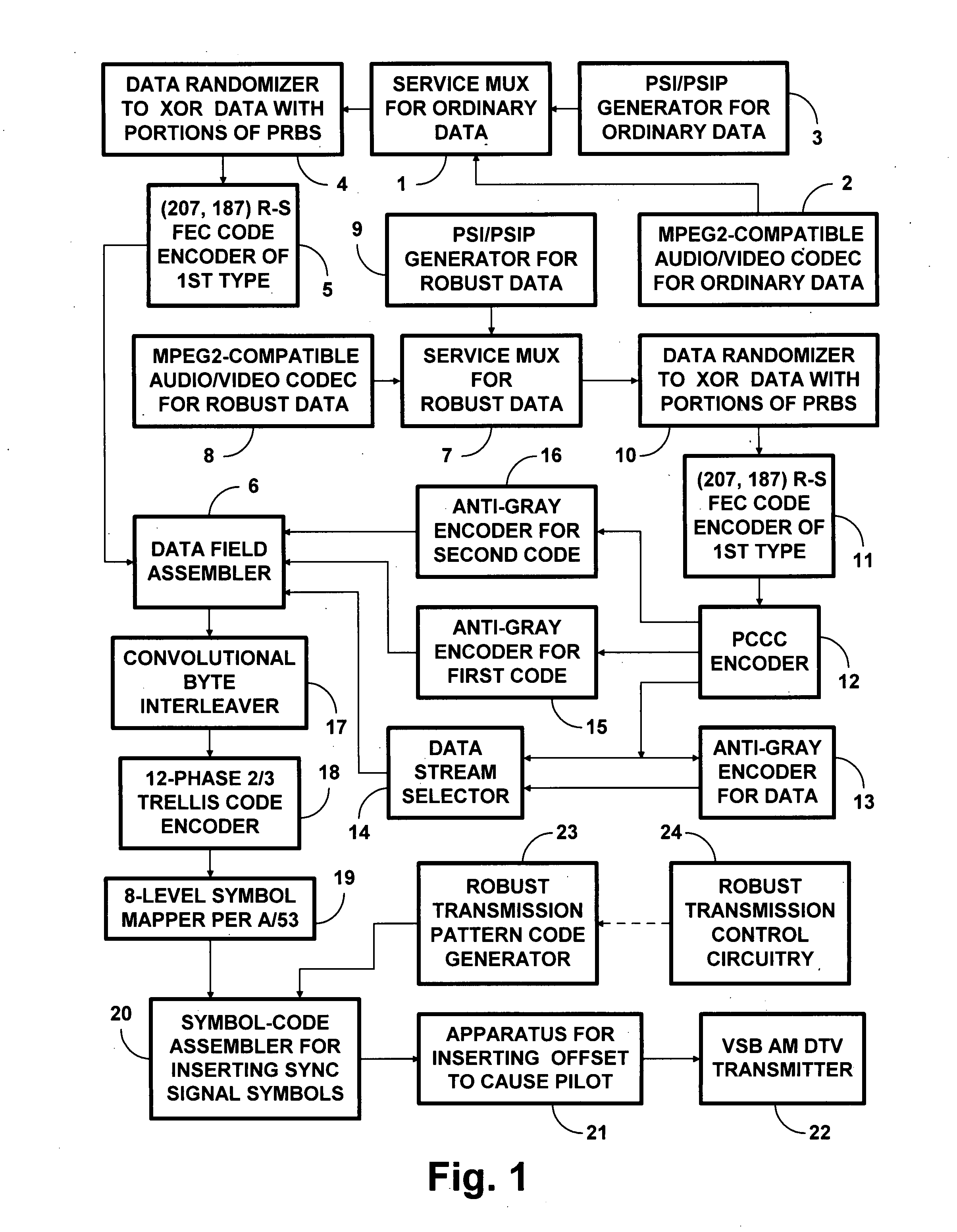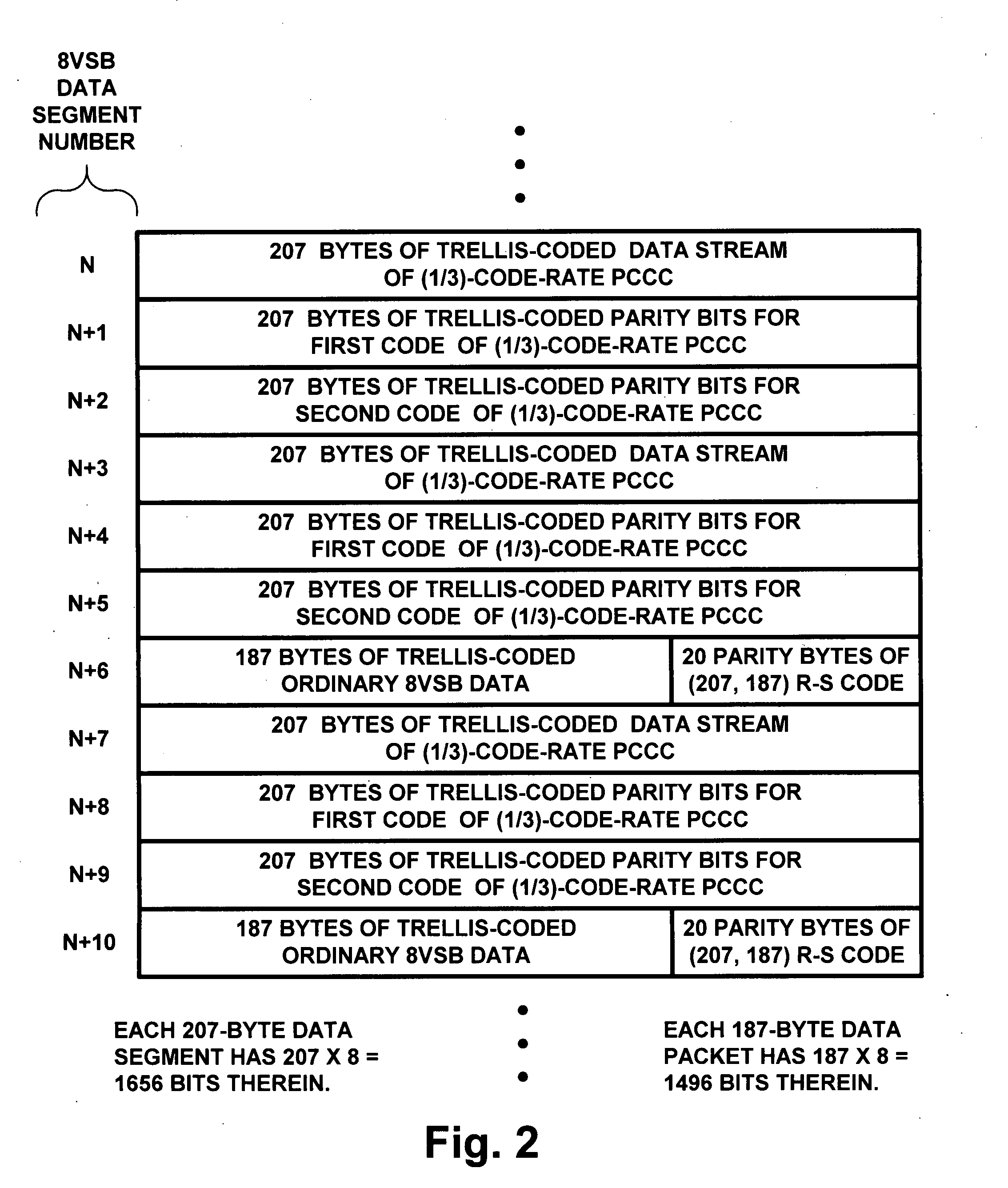8VSB DTV signals with PCCC and subsequent trellis coding
a trellis coding and dtv technology, applied in the field of dtv signals with pccc and subsequent trellis coding, can solve the problems of complex stream multiplexer for the transmitter, mischaracterization of the actual legacy receiver problem, and complex broadcast studio practice, so as to improve the capability of parallelly concatenated convolutional coding and overcome deep fades. , the effect of improving the capability of reed-solomon coding
- Summary
- Abstract
- Description
- Claims
- Application Information
AI Technical Summary
Benefits of technology
Problems solved by technology
Method used
Image
Examples
Embodiment Construction
[0080]FIG. 1 depicts a service multiplexer 1 for ordinary 8VSB data. The service multiplexer 1 is connected for time-division multiplexing 187-byte MPEG-2-compatible data packets from an audio / video codec 2 and from a PSIP / PSI generator 3, which codec 2 and PSIP / PSI generator 3 are associated with the transmission of ordinary 8VSB data. The service multiplexer 1 is further connected for applying the time-division multiplexed MPEG-2-compatible data packets to a data randomizer 4 to be exclusive-ORed with portions of a pseudo-random binary sequence (PRBS) prescribed in A / 53, Annex D, §4.2.2 titled “Data randomizer”. The data randomizer 4 is connected for supplying the resulting randomized 187-byte MPEG-2-compatible data packets to an encoder 5 for (207, 187) Reed-Solomon forward-error-correction coding of a first type, as prescribed in A / 53, Annex D, §4.2.3 titled “Reed-Solomon encoder”. The encoder 5 is connected for supplying the resulting 207-byte R-S FEC codewords to a first input...
PUM
 Login to View More
Login to View More Abstract
Description
Claims
Application Information
 Login to View More
Login to View More - R&D
- Intellectual Property
- Life Sciences
- Materials
- Tech Scout
- Unparalleled Data Quality
- Higher Quality Content
- 60% Fewer Hallucinations
Browse by: Latest US Patents, China's latest patents, Technical Efficacy Thesaurus, Application Domain, Technology Topic, Popular Technical Reports.
© 2025 PatSnap. All rights reserved.Legal|Privacy policy|Modern Slavery Act Transparency Statement|Sitemap|About US| Contact US: help@patsnap.com



